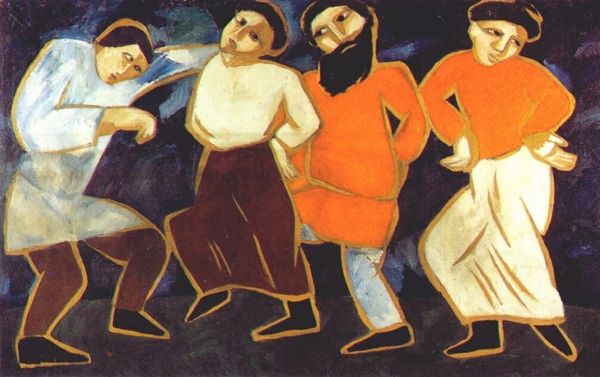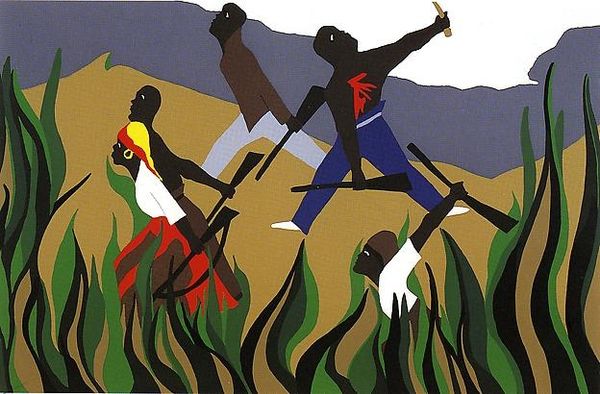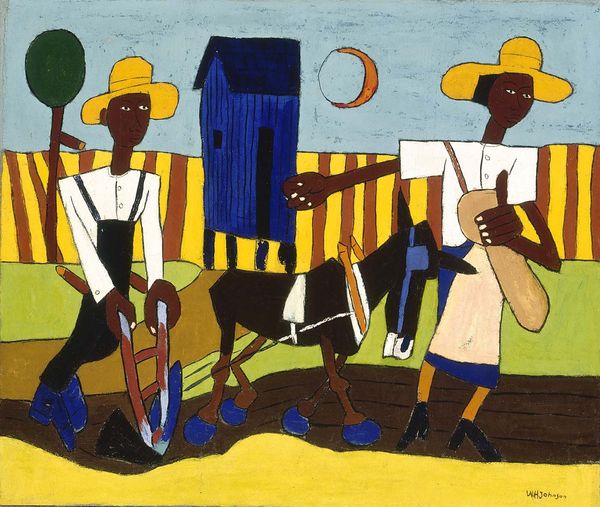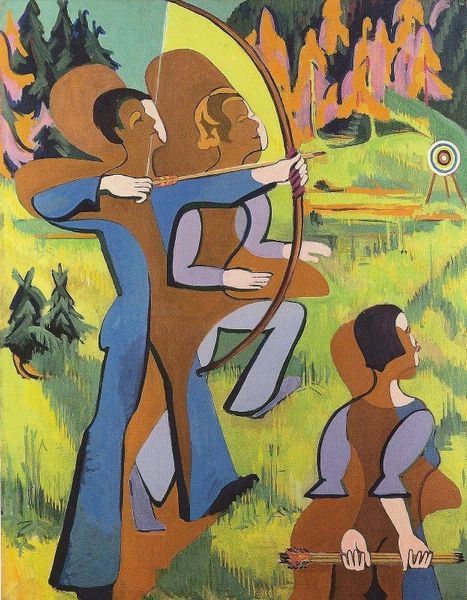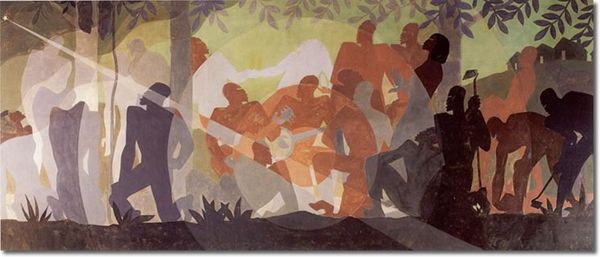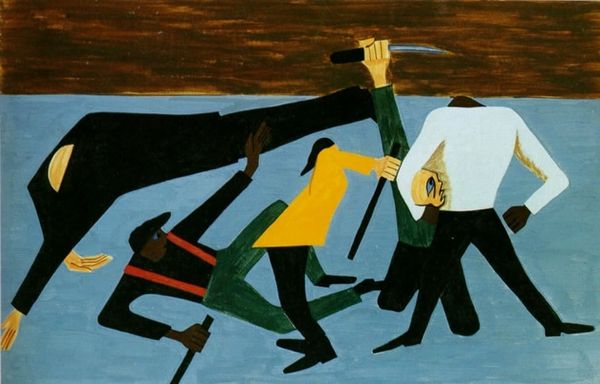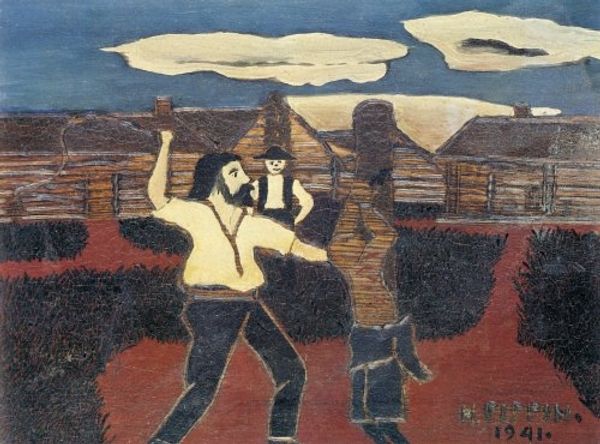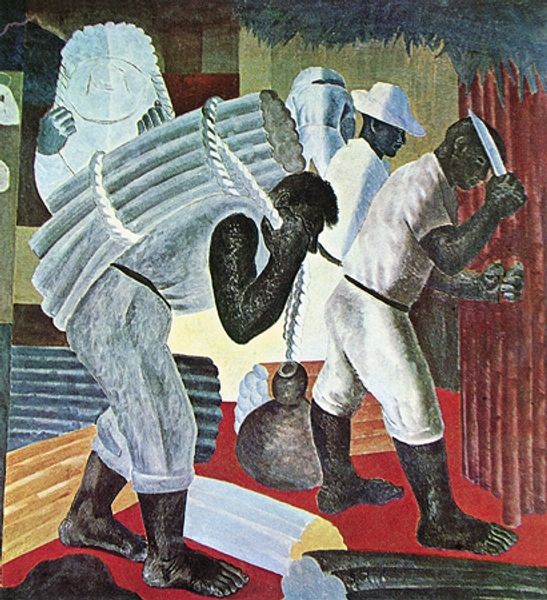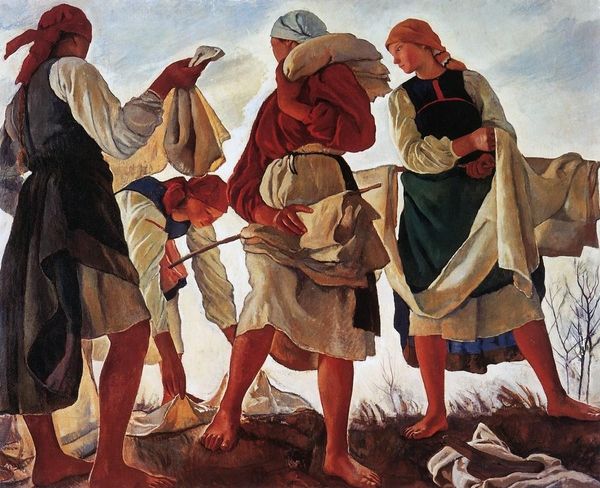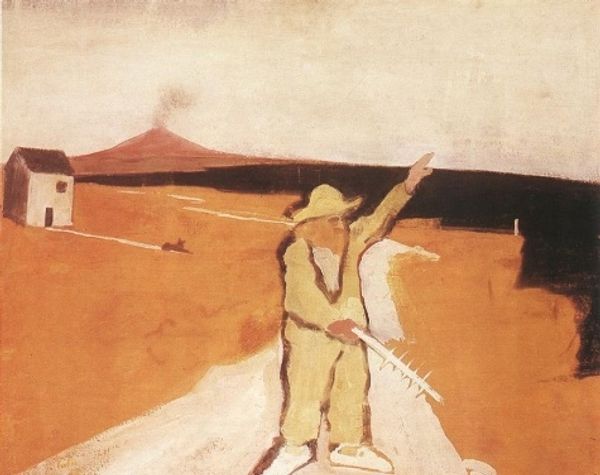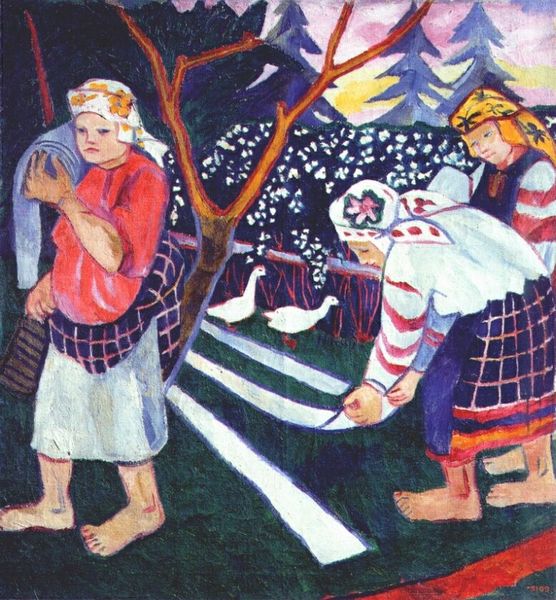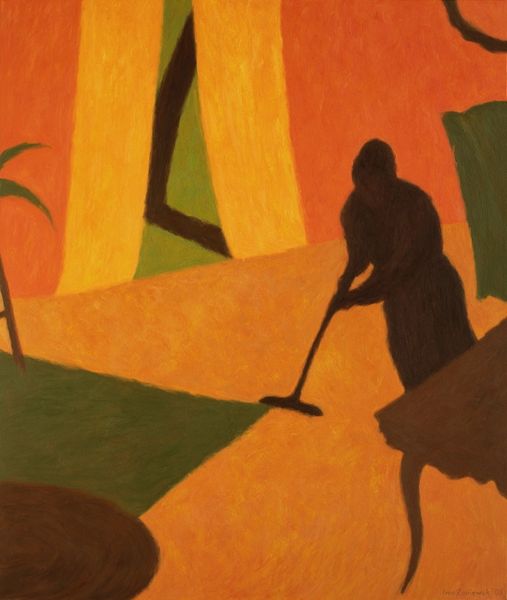
painting, oil-paint
#
painting
#
oil-paint
#
landscape
#
rayonism
#
figuration
#
social-realism
#
expressionism
#
naive art
#
russian-avant-garde
#
genre-painting
Copyright: Public domain US
Natalia Goncharova (1881-1962) is among the first woman artists who was recognised as a key figure in avant-garde art during her lifetime. Unlike many women artists, Goncharova’s skill and innovations were acknowledged across the world – she was even the first woman to hold a solo exhibition in her native Russia! The show displayed over 800 of her works. Why do you think it might have been important for women to have their own exhibitions in the early 20th century? This work, titled ‘Haycutting’, was painted by Goncharova in 1910. Here, she uses bold outlines and flat colours to construct a simple yet energetic image. ‘Haycutting’ employs a neo-primitivist style inspired by Russian folk art to depict rural labourers at work. The composition focuses on the figure holding a scythe at the left of the canvas. This figure is unrealistically large, creating an expressive rather than natural tone. He stands in a dynamic pose with his legs bent, providing a sense of movement and effort. We really get the impression that we’re looking at a snapshot of active work! Next to the main figure are two small labourers, who carry bales of yellow hay. They almost look like children due to their tiny sizes! Both figures wear long-sleeved white smocks with simple brown trousers, a brown cap, and black boots. The brown colour is repeated in the ground, tree trunks, and horse – symbolically suggesting a connection with nature. Goncharova has limited her colour palette to natural earth tones, to reinforce the sense of the everyday. Behind the trees in the background, we can just make out the wheels of a cart. In the far-right corner stands a brown horse, consisting of simple yet recognisable angular shapes. This is an expressive representation of traditional life for rural farmworkers. What do you think of this painting?
Comments
No comments
Be the first to comment and join the conversation on the ultimate creative platform.
